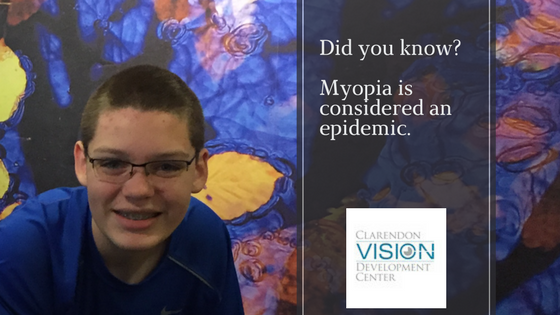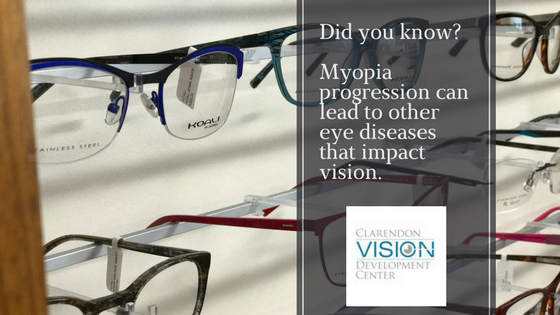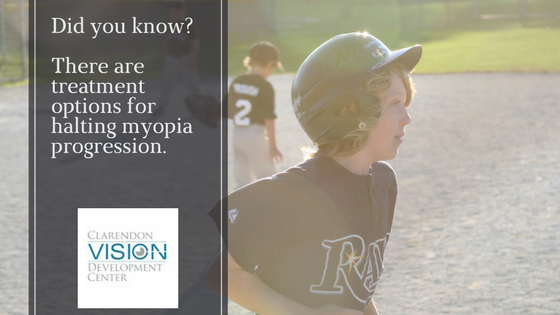Three Things You Probably Don’t Know About Myopia in Kids
Myopia, or nearsightedness, is pretty common. Maybe you wear glasses to correct your nearsightedness. If not, you probably have several close friends or family who do. But hold on a second. Did you know that:

Myopia is considered an epidemic? In some parts of the world almost all children and adolescents have myopia.
“Because the eye grows throughout childhood, myopia generally develops in school-age children and adolescents. About one-fifth of university-aged people in East Asia now have this extreme form of myopia, and half of them are expected to develop irreversible vision loss.”
While the research to fully understand the causes of myopia is still in-progress, several factors seem to contribute. Genetic risk is one component of myopia. Children with one or both parents who are nearsighted are likely to develop nearsightedness themselves. Our cultural shift to online time and close reading over the past one hundred years or more has also contributed. And children’s general lack of time spent outdoors, whether engaged in sports or just playing at the beach, seems to have a significant impact on the risk of developing myopia.

Myopia progression can lead to other eye diseases that impact vision?
For most children with myopia, their vision worsens over time. For parents this can be a really worrisome challenge. Getting stronger and stronger prescriptions each year doesn’t feel like a great solution. Additionally, as myopia progresses, people are at greater risk for other eye conditions that can significantly impact vision.
“High amounts of myopia are associated with an increased risk of sight-threatening problems, such as retinal detachment, choroidal degeneration, cataracts, and glaucoma. Slowing the progression of myopia could potentially benefit millions of children in the USA.”

There are treatment options available for halting myopia progression?
Orthokeratology is one option. Orthokeratology or Ortho-K treatment involves wearing specially designed retainer lenses overnight. These lenses are designed and custom fitted to each individual. The Ortho-K retainer lenses gently reshape the cornea while you sleep. In the morning, you remove the lenses and have clear sharp vision all day long. The benefit of Ortho-K treatment is improved vision for those with myopia. Some patients see results in as little as one night of wearing of Ortho-K retainers. With this improved vision, kids can leave their glasses off for sports, school, or entertainment.
Some doctors and parents may ask, “What’s the big deal about slowing myopia?” Plenty of people have experience with myopia themselves and may not see the benefit of myopia control. You just need new glasses from time to time, right? Not exactly. Numerous models have shown that even a 50% reduction in myopia progression significantly reduces the risks of myopia-related eye diseases, many of which can lead to permanent vision loss. The better question is: Why shouldn’t we make myopia control the standard of care for all children? In our office we do more than just give stronger prescriptions.
The options to control myopia have proven efficacy, excellent safety records, and are non-surgical. Parents and practitioners should be encouraged to think differently about childhood myopia and focus on helping children with early intervention and treatment.
Instead of just correcting vision with higher prescriptions, Orthokeratology provides a method of myopia correction that is unique. A comprehensive vision exam is the first step toward assessing whether Ortho-K therapy would be an option. Make an appointment today and help your child ditch those glasses in 2018!



